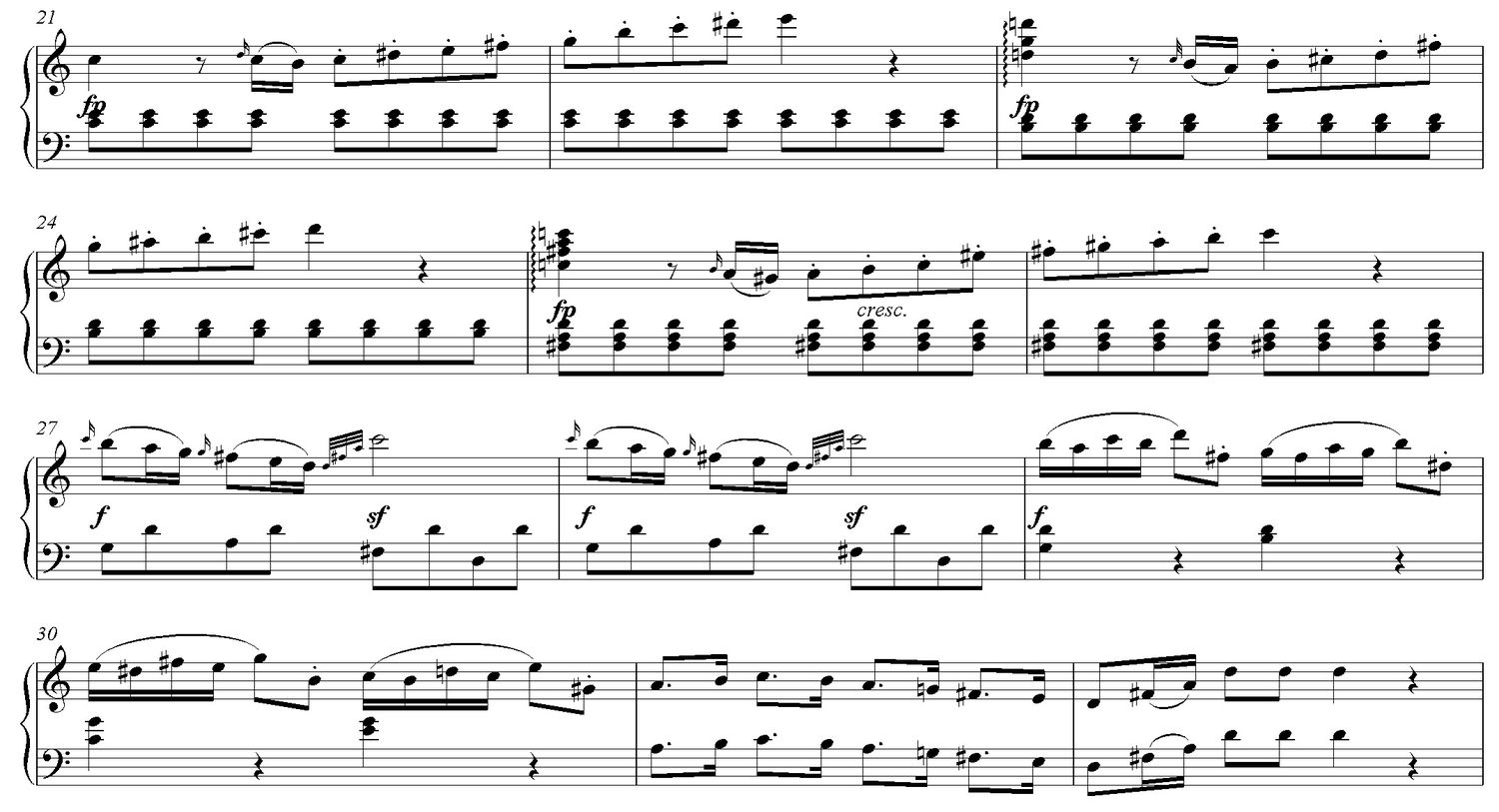Home>Production & Technology>Music Theory>Music Theory How To Find Prime Form


Music Theory
Music Theory How To Find Prime Form
Published: January 31, 2024
Learn how to find the prime form in music theory. Understand the principles behind this essential concept and enhance your understanding of music composition.
(Many of the links in this article redirect to a specific reviewed product. Your purchase of these products through affiliate links helps to generate commission for AudioLover.com, at no extra cost. Learn more)
Table of Contents
Introduction
Music theory is a fundamental aspect of understanding and appreciating music. It provides us with a set of tools and concepts that allow us to analyze and decipher the intricate patterns and structures found within musical compositions. One important concept in music theory is finding the prime form of a musical set.
The prime form is a way to represent a musical set in its most compact and efficient form, using the smallest possible intervallic content. It allows us to understand the inherent structure and relationships within a set of pitches or notes. By finding the prime form, we can gain insights into the symmetries, transpositions, and transformations present in a musical composition.
In this article, we will delve into the concept of prime form and explore the steps to find it. Whether you are a musician, composer, or simply someone interested in deepening your understanding of music theory, this article will provide you with the knowledge and tools to analyze and explore the prime form of musical sets.
Before we dive into the process of finding prime form, let’s first understand the concept and significance of prime form in music theory. It will serve as a foundation for our exploration and help us grasp the essence of this analytical tool.
Understanding Prime Form
Prime form is a concept in music theory that allows us to represent a musical set in its most concise and efficient form. It is a way to analyze and understand the structure and relationships within a set of pitches or notes.
The prime form is derived from set theory, a branch of mathematics that deals with the properties and relationships of sets. In music theory, sets are used to represent collections of pitches, chords, or other musical elements.
When we talk about prime form, we are referring to the specific arrangement of the set’s pitches that minimizes redundancy. By eliminating duplications and arranging the pitches in the most compact form, we can better comprehend the underlying structure of the set.
One of the primary goals of using prime form is to identify the inherent symmetries present within a musical set. Symmetry is an essential element in many musical compositions and can be found in various forms, such as transpositions, inversions, rotations, and transformations.
Furthermore, prime form allows us to compare and analyze different sets, identifying similarities or differences in their intervallic content. By representing sets in their prime form, we can easily recognize patterns and relationships between different musical elements.
It’s important to note that finding the prime form is not limited to pitch collections. It can also be used with other musical elements, such as rhythm, dynamics, or even timbre. The concept of prime form provides a universal framework for analyzing and understanding the underlying structure of music.
Now that we have a basic understanding of prime form and its significance in music theory, let’s explore the steps to find the prime form of a musical set. By following these steps, we can unlock the hidden intricacies and patterns within a composition.
Steps to Find Prime Form
Finding the prime form of a musical set involves a series of steps that help us organize and arrange the set in its most compact and efficient form. Here are the steps to find the prime form:
- Transpose the set: Start by choosing a pitch as the root of the set and transpose all the other pitches accordingly. This step ensures that the set is in a consistent reference pitch, making it easier to analyze.
- Order the pitches: Arrange the transposed pitches in ascending order. This step helps us compare and identify patterns within the set.
- Normalize the set: Normalize the set by finding the intervallic content between consecutive pitches. Subtract the smaller pitch from the larger one, resulting in a series of intervals.
- Find the inversion: Determine the inversion of the normalized set by subtracting each interval from the sum of the largest interval in the set. This step allows us to identify symmetrical relationships within the set.
- Select the prime form: Choose the set or its inversion with the smallest intervallic content as the prime form. This will be the most compact representation of the set, minimizing redundancy.
By following these steps, we can systematically analyze and find the prime form of a musical set. Each step serves a specific purpose in organizing the set and highlighting its inherent structure and relationships. It is important to note that the concept of prime form is not limited to specific musical elements but can be applied to various aspects of music, including pitch collections, rhythms, and more.
Now that we understand the steps involved in finding the prime form, let’s explore an example to see how it works in practice.
Example of Finding Prime Form
To better understand the process of finding the prime form of a musical set, let’s walk through an example. We will use a simple five-note set: C, D, E flat, G, and A flat.
First, we need to transpose the set to a consistent reference pitch. Let’s choose C as our root pitch, so the transposed set becomes C, D, E, G, and B flat.
Next, we order the pitches in ascending order, resulting in C, D, E, G, and B flat.
Now, we normalize the set by finding the intervallic content between consecutive pitches. The intervals are as follows: 2nd, 2nd, 4th, 3rd.
To find the inversion, we subtract each interval from the sum of the largest interval in the set (in this case, the 4th). The inverted intervals become: 2nd, 2nd, 3rd, 2nd.
Finally, we can select the prime form by comparing the intervallic content of the set and its inversion. In this example, the set has a smaller intervallic content than its inversion, so the prime form is C, D, E, G, and B flat.
By finding the prime form of this set, we have represented it in its most compact and efficient form, allowing us to analyze its structure and relationships more effectively.
This example demonstrates the step-by-step process of finding the prime form of a musical set. By applying these steps to larger and more complex sets, we can uncover fascinating patterns and symmetries within a composition.
Now that you have seen an example of finding the prime form, you can experiment with different sets and explore how the process applies to diverse musical elements.
Conclusion
Understanding and finding the prime form of a musical set is a valuable tool in music theory that allows us to analyze and uncover the structural intricacies within a composition. By following a series of steps, we can organize the set in its most compact and efficient form, highlighting the inherent patterns and relationships.
Prime form provides us with insights into the symmetries, transpositions, and transformations present in a musical composition. It allows us to compare and analyze sets, identifying similarities and differences in their intervallic content. By representing sets in their prime form, we can easily recognize patterns and relationships between different musical elements.
By transposing, ordering, normalizing, finding the inversion, and ultimately selecting the prime form, we systematically analyze and uncover the essential structure of a musical set. This process can be applied to various aspects of music, including pitch collections, rhythms, and more.
Understanding prime form expands our repertoire as musicians, composers, or simply enthusiasts of music theory. It provides us with a deeper understanding of composition, allowing us to appreciate the intricate details and intentional choices made by composers.
So whether you’re studying music theory, looking to improve your composition skills, or simply exploring the depths of music, understanding how to find the prime form of a musical set can greatly enhance your understanding and analysis of music.
Now that you have learned about the concept of prime form and its significance, you can apply this knowledge to your own musical journey. Delve deeper into the world of music theory, explore different sets, and uncover the hidden symmetries and patterns that make each composition unique.
Remember, music theory is not just a set of rules and concepts; it is a tool that deepens our connection and appreciation of music. So go forth, explore, and let the prime form be your guide in unraveling the beautiful complexities of music.











